‘I hope it makes the visitor more alive and aware and alert of their surroundings’
12th April 2024
Turner Prize-winning artist Sir Antony Gormley talks to Harriet Cooper about his new exhibition at Houghton Hall and why Norfolk is a source of inspiration
Sir Antony Gormley is one of the most important artists of our time. You might well know him from the ‘Angel of the North’ (1998), his huge public sculpture in Gateshead, or ‘Another Place’, a series of cast-iron figures that have stood on Crosby Beach, north of Liverpool, since 2005. But these are just two examples from a prolific career that has spanned more than four decades and seen Gormley exhibit in over 120 solo shows across the world.
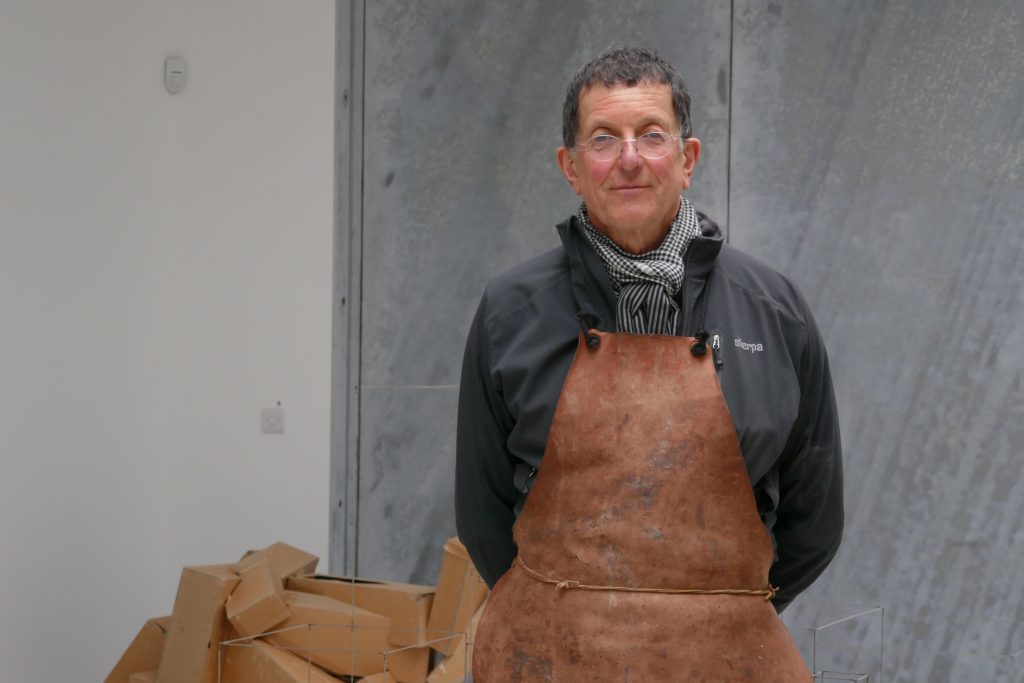
At the age of 73, he continues to create his sculptures, public artworks and installations at his cavernous workspace in London’s King’s Cross, his foundry in Northumberland and a studio at his home in West Acre, Norfolk.
Indeed, this spring sees the opening of one of Gormley’s most spectacular large-scale installations, ‘Time Horizon’, at Houghton Hall (the first time it has been seen since it was shown in Catanzaro, Italy, in 2006). It features 100 life-size, cast-iron bodies, all at the same datum level to create a single horizontal plane across the Palladian mansion’s parkland. Here he talks to North Norfolk Living about his ambitions for the exhibition and finding inspiration in Norfolk.
The show is at Houghton because David [Cholmondeley, 7th Marquess of Cholmondeley] asked me to do it. I am delighted, as it is an extraordinary place with this 18th century house and its huge park. There’s a lot of history there.
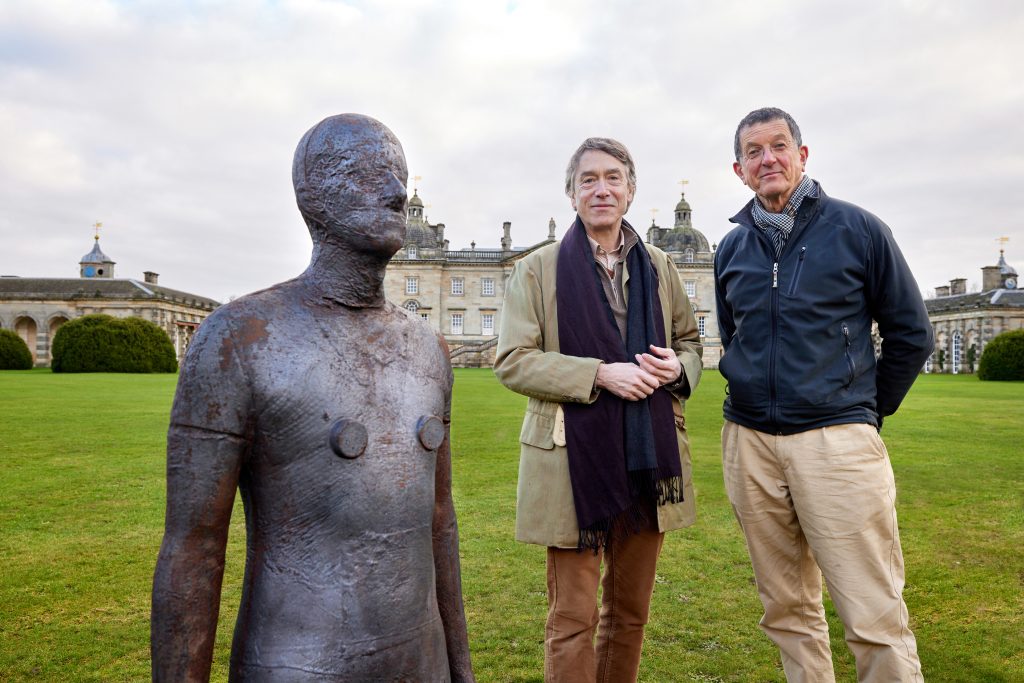
My ambition for the show is to allow for all of the humanly made aspects of the landscape to be questioned by the more planetary or geological. East Anglia is where the end of the last glacial maximum stopped. This flattening of the topography interests me a lot and I want to introduce this absolute horizontal through the geological landscape that was formed all those years ago. So we’re inserting a body-form into the ground floor of Houghton Hall that is ten times the mass of a living body and, when lowered into the ground, half its height. We’ve taken this as the datum level, which then extends through about 300 acres of the park.
‘So this is no longer the awestruck art lover who stands gaping at a beautiful thing; you are in a blustery leaf-filled afternoon and everything – including you – is up for being considered and given attention.’
ANTONY GORMLEY
There are 100 works spread everywhere. To the east there are a number buried up to their necks, and as they progress towards the house, they get more exposed – some are buried up to their midriff. And as you go west, they become increasingly revealed, until you drop off the ha-ha, and then they are on pillars, which vary in height. The highest installations are just under six metres tall.
David and [his wife] Rose have very kindly said they will leave the front and back doors open so that you can see around 60 works if you were to walk in a straight line on the axis of the house from east to west. The idea is that the house itself is floating in time and space, and rather than adding to the decorative ensemble that is already there, the work is trying to ask a question about what our relationship is to the planet and to deep sidereal time.
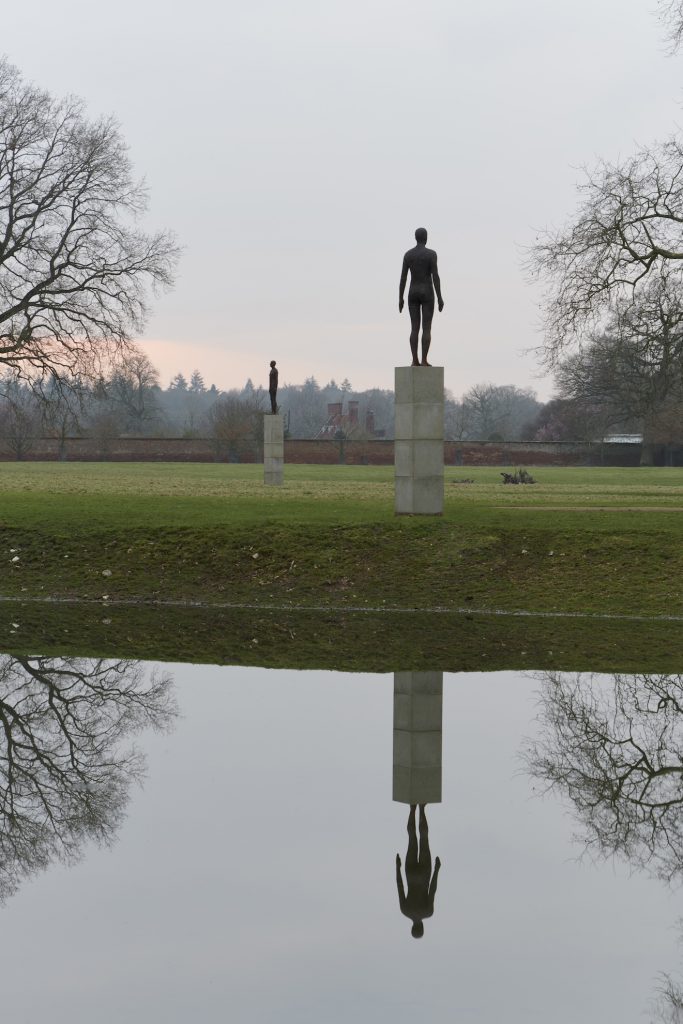
None of the works face each other – they all look in random directions – and their placement is entirely given by the terraforming of the glaciers rather than by human plantings of avenues or specimen trees.
It has been a challenging but enormous adventure; we had the whole house and park scanned from drones and we made a topographical map that then decided the areas where the works would be visible. The implication is that there are several hundred more that are entirely buried. So, it’s a game of what you can see and what you can touch and what you can imagine – the perceivable, the palpable and the imaginable. The installation asks visitors to wander about, explore the site and become a point of connection, hopefully relinking viewers with their own bodies.
I’ve talked about this work as a form of acupuncture and that is what it is. Acupuncture is a way of reactivating the implicit meridians of energy within the body by puncturing its visible surface, in order to make it more alive. I am hoping to do that for this 300 acres of the park. But I hope it also makes the visitor more alive and aware and alert of their surroundings.
In the old days, art used to be about making pictures – this is not a picture. This is a transformation of a bit of the existing world with its own histories and its own presentness – you are in that picture, you are part of that picture, you are the protagonist. So this is no longer the awestruck art lover who stands gaping at a beautiful thing; you are in a blustery leaf-filled afternoon and everything – including you – is up for being considered and given attention.
I have three sculptures at the UEA – one on top of the Central Library building, one at the end of the library colonnade and one on the roof of the biology department. I went to Cambridge and that’s the kind of cloistered, monastic ideal of an inward-facing campus – UEA is exactly the opposite. It looks out to nature and to the horizon and to the world at large – it was a real privilege to install the work there. I think that’s what I was trying to celebrate, the fact that this is a really outward looking institution.
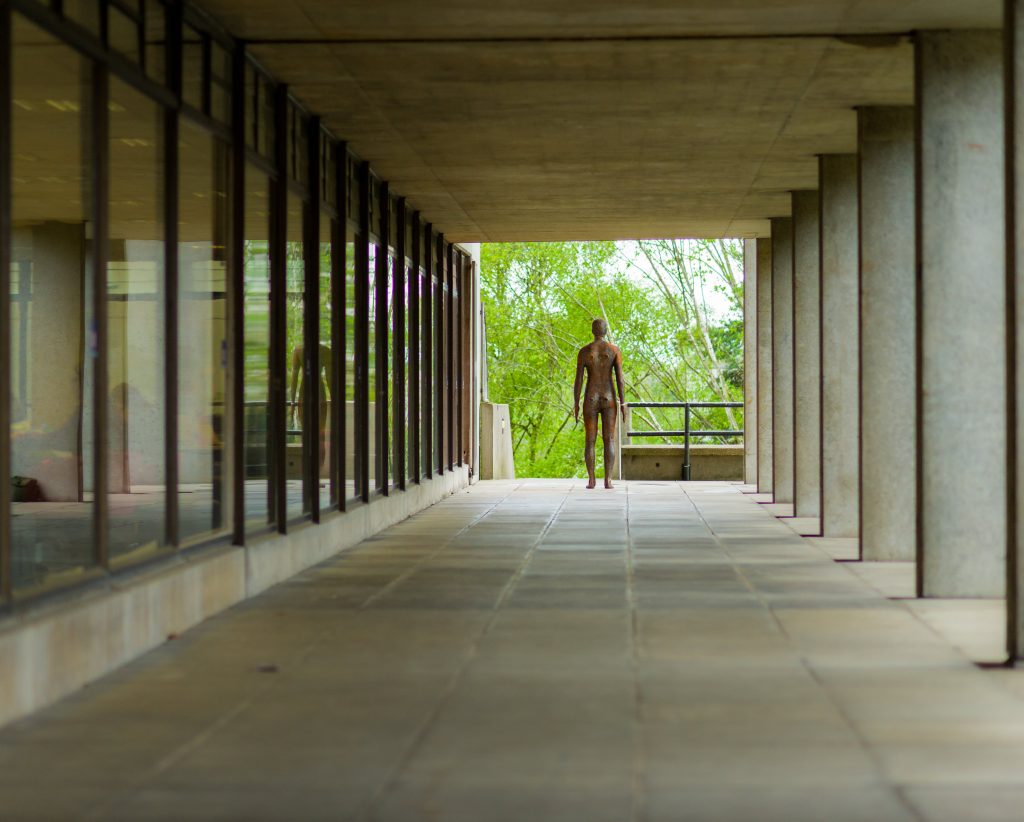
The Gunton Arms is full of significant British art – [the owner] Ivor Braka is a great art lover – and the food is fantastic. We go to The Dabbling Duck [in Great Massingham] more than anywhere else.
I like walking from Burnham Overy Staithe towards Holkham and then coming back through the woods and that wonderful rabbit rich mossy dune land that is so special. One of my favourite views is at Gun Hill; looking back to the marshland from the coast is magical, as is the huge openness of those beaches.
Buying High House was completely random. Vicken, my wife who is an artist, knew it quite well, but I had only been to Norfolk a couple of times. We thought it remarkable to have a place we can use for working – we both have studios there and artists in residence – in a wonderful landscape. We get a lot of inspiration from it.
Grounded, open and breezy is my feeling about Norfolk. It’s not rushing to join the 21st Century, it is happy to be itself and there is something really refreshing about that – and the people who live in Norfolk, they get on with things. And there is always that sense of the open, which is very important to me. When we first started coming, it was often via the winding, cosy lanes of Suffolk where you can’t see very far and then you arrive in Norfolk, and everything opens up. And it’s bracing, there’s always a wind – I think that’s really good, it wakes you right up.
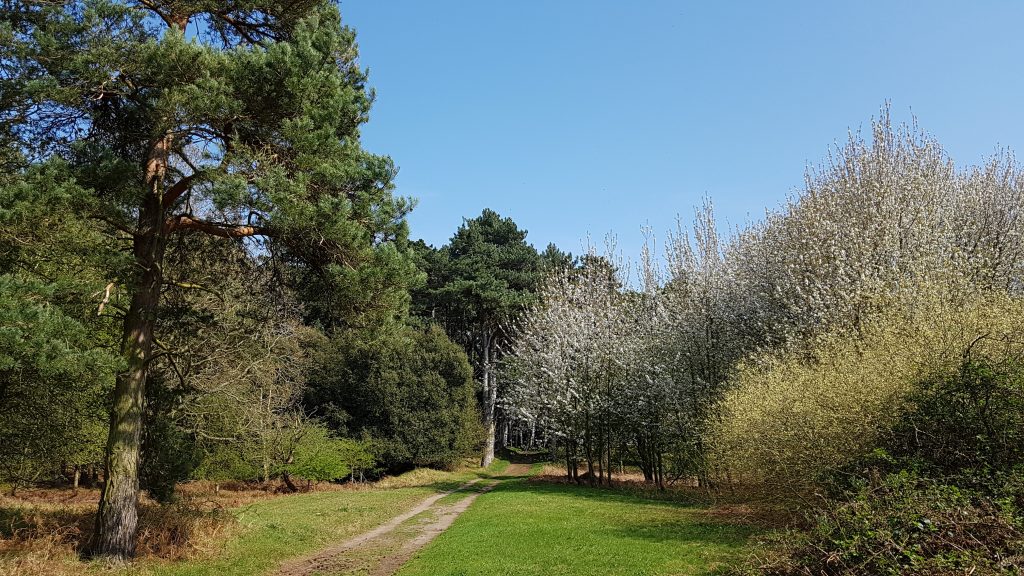
‘Time Horizon’ runs from 21 April until 31 October. For more information and to buy tickets, visit www.houghtonhall.com













